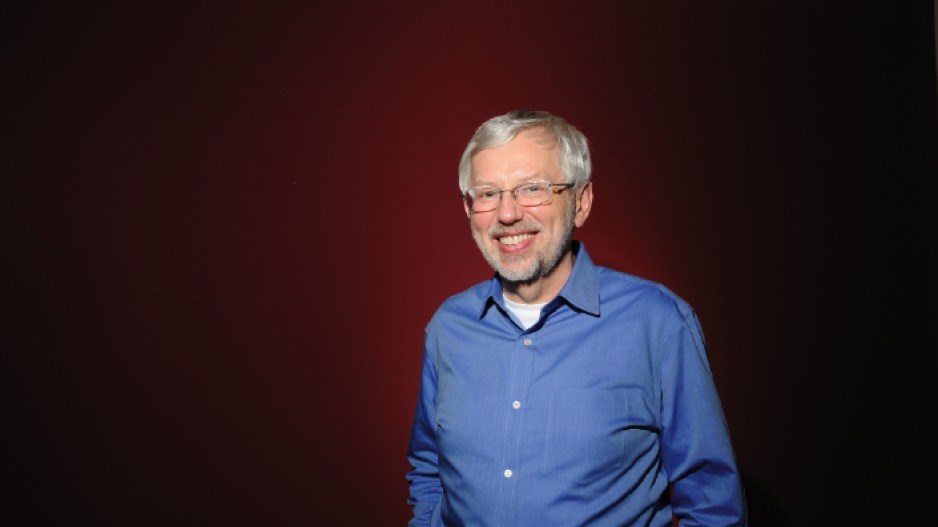In the years following anti-apartheid activist and future South African president Nelson Mandela’s 1962 arrest and imprisonment, many across the world stood up to oppose the apartheid regime that procured his incarceration.
Among them was Harvey McKinnon. He was studying history at Dalhousie University when he started an organization to protest apartheid and other injustices.
“I had no idea that something that awful existed,” he said. “I was your typical university student who would go to dances and have a beer.”
Shocked into action, McKinnon decided to devote his life and career to helping those in need. Soon, Oxfam came knocking on his door and he went to work for it.
In 1989, he decided to develop his own business around giving, and Harvey McKinnon Associates was born. His company provides strategic direction and fundraising programs for non-profit organizations looking to secure donors. Specializing in direct mail, McKinnon offers everything from online giving programs to fundraising training.
He’s written a bestselling book on the topic as well, The Power of Giving, which has been published in eight languages and devotes an entire chapter to the subject of corporate giving.
In general, said McKinnon, there exists a well- accepted tradition that businesses will help build and support the communities in which they operate, enriching the lives of the people around them and sharing the wealth.
“But there’s a lot of research in the last few years that shows that there are many more benefits to corporate giving than people thought.”
By partnering with a charitable organization, businesses build credibility, McKinnon says.
“People are more likely to patronize businesses that are involved in the community, that are supporting charities and that are perceived as more ethical.”
His company’s choice of a courier service offers a good example. Years ago they switched to one that supported environmental causes. Price wasn’t the deciding factor. The courier company’s ethical values motivated the change.
People who work at a business that supports community organizations will also feel better about where they work than those who do not, said McKinnon. “I know people who have quit very high paying jobs because they don’t feel good about the business.”
It’s also good for team building. McKinnon recounted one occasion when he brought his staff on a trip to a worksite for Habitat for Humanity. “It was a fantastic experience for everybody,” he said. “We worked together and people felt great about it.”
Camaraderie among staff and liking the company for which they work keeps people from leaving, too. “Companies in many sectors have a high turnover. Anything they can do to make people feel good about their company will make a significant difference in staff retention.”
Helping companies keep staff around is one of Andrew Reid’s strengths. As founder of Big Fish Interactive, for the past 22 years Reid has worked with companies to develop leadership and development programs that better staff, improve corporate performance and promote retention.
Although he didn’t start out with a focus on philanthropy, it’s now a significant part of his business. “It’s a great tool that can be used for staff engagement,” he said.
His approach to philanthropy differs from McKinnon’s in that he’s come at it from the business benefits side. And that’s revealed to him some of the deep corporate rewards to be gained from initiatives around corporate giving.
For example, he said, it improves performance. Compelling staff to work at their best is one of the biggest struggles facing businesses. He characterizes two general levels of staff performance. At the lower level, workers satisfy the job requirements because they feel pressured or obligated to do so.
At the higher level, which is what a lot of his clients ask him to help them achieve, employees want to work at their best because “they are linked to a common value and purpose associated with the work.”
According to Reid, philanthropy is a great way to develop these shared values. Through giving programs, companies can draw staff into something more personally valuable than a paycheck.
When choosing which charity to engage, said Reid, leaders often choose based on personal preferences, experiences or charity popularity. However, “if that decision is made in isolation, leaders can miss a great opportunity [for engagement].”
Although the decision should align with the leadership’s view on the goals, purpose and culture of the organization, it is critical to include staff. Doing so has the effect of drawing employees’ personal values together with those of the organization, encouraging them to contribute more effectively to strategic goals.
“It’s management’s job to invite people to participate at their highest level,” said Reid. “Building shared vision through corporate giving drastically changes the cultural engagement.”




